John & Bob's soil solutions?
Bc _zone10b
3 years ago
Featured Answer
Sort by:Oldest
Comments (28)
Bc _zone10b
3 years agolast modified: 3 years agoRelated Discussions
question for Bob1016
Comments (6)The issue with clay sand is kind of the same issue as pear based mixes: you need to add *a lot* of material. You need to ask yourself, do you really want to amend it. There are plants that thrive in clays, or you can do raised beds of soil. To make a clay soil better you need at least a 4" thick layer of coarse sand (usually sold as builders sand) and another 4" of very coarse organic matter (barks work great because they are very coarse and take a while to break down); that's about a 1:3 ratio of cft:sqrft. So if you want to ammend a large area (I would not do anything smaller than a 6' x 6'), quart bags are not really going to work. Also make sure you check the pH, clay soils tend to be very alkali, the bark helps but you may need to add sulfur. I've also heard of people using large amounts of calcium to make the clay form aggregate (calcium somehow makes clay looser), but I would not recommend that; you pH will be dangerously alkali, I doubt it would last, and it just doesn't sound like a good idea;-)...See Morerose soil mix..gone wrong help
Comments (56)If you want to try your hand at making the most inexpensive, organic, and most durable ( durable=meaning breaking down the slowest, so that it lasts the longest before a rose needs to come out of the pot, root bound or approaching that state), try these simple ingredients that are readily available: 3 parts - mini pine bark mulch 2 parts - sphagnum peat moss, not Michigan peat moss, must be sphagnum peat moss 1 part - aged manure or aged compost...homemade or store bought 1 part. - average garden soil This formula is for all potted roses that are expected to remain in the container for up to 5 years. The pot should not be clay, that is unglazed terra cotta, but should be plastic or resin. Of Course, a pint sized own root rose should not go into a 15 gallon pot. It would most likely get rot in a heart beat. It has to be graduated up to the 15 gal. size in steps. Moses...See MoreBob and Jerry's Soil optimizer
Comments (6)I bought some at one of the end-of-season sales but haven't used it yet. I was going to try some winter tomatoes but injured my hand before I could buy them, then had to stay away from soil and compost for a month :( I still have a healthy Sungold, so maybe it's worth trying, though the Sungold is too big to make a frost-protection tent. Most years, a few tomatoes keep producing until the first frost finally kills them off. Usually the temperatures don't stay cold for long -- it's the freeze/thaw of the ice crystals that settle on the leaves and stems, so if you can make an overhead shelter and the weather cooperates, you may be able to nurture it along. When I grew Siberia last year (planted between monsoons in late March), I got 286 tomatoes during the regular season (compared to 261 from an Early Girl), even though the plant stayed compact and never got taller than a couple feet. One day in the middle of August I picked 48 of them. Then picked 24 a week later. Monthly totals were July 30, August 156, September 19, October 58, and November 23. It would be interesting to see how it does with a late start....See MorePreparing for drought again: Wetting agents and soil conditioners
Comments (41)I’ve used dish soap on hydrophobic soils in the past. It does break the water tension and it does cure the problem if the problem was caused by short term issues. My soil was hydrophobic due to being exposed to the heat and sun from the soil yard. When it was delivered to me, it repelled water. This was a short term issue, easily cured. If the hydrophobia is long term, I think different measures must be taken. The people in Australia are our first clue. Their dry heat render their sandy soils hydrophobic in a more permanent way. They can’t just add a little soapy water, commence regular watering, and have fertile soil. If they could, they wouldn’t have an ongoing issue with infertile, hydrophobic soils. They are finding that they have to use a combination of wetting agents, lots of organic matter, and of course, mulch! I think many of us in the drought ridden areas of California are beginning to learn from the people in Australia because our soils are becoming dry and baked. In my new home, I have sandy, hydrophobic soil and have been looking into wetting agents myself. I have added more organic matter than I though was proper and even peat moss and still, plants don’t want to thrive. This year, I am going to add ollas, and a wetting agent. I am cautious, because there seems to be conflicting information about these agents. I will pick the one that seems safest and cross my fingers because at this point, the plants aren’t living anyway....See MoreBc _zone10b
3 years agoBc _zone10b
3 years agoarmoured
3 years agoBc _zone10b
3 years agoarmoured
3 years agoBc _zone10b
3 years agolast modified: 3 years agoBc _zone10b
3 years agoBc _zone10b
3 years agolast modified: 3 years agoBc _zone10b
3 years agoBc _zone10b
3 years ago
Related Stories
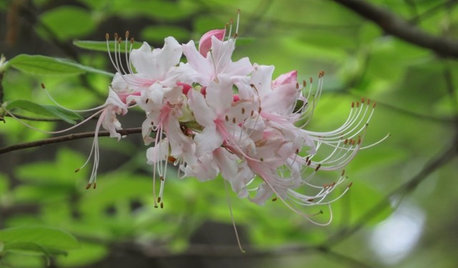
GARDENING GUIDESGreat Design Plant: Rhododendron Canescens
Have a damp, shady spot in your garden that needs a lift? This Southern U.S. native may be the solution
Full Story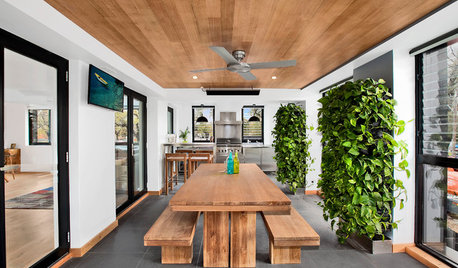
GREEN BUILDING5 Reasons to Add a Living Wall to Your Home
Short on space but want to give your home more greenery? An architect shares why a vertical garden could be the solution
Full Story
GARDENING GUIDESLearn the Secret to Bigger and Better Roses
Grow beautiful roses using both ordinary and unusual soil amendments
Full Story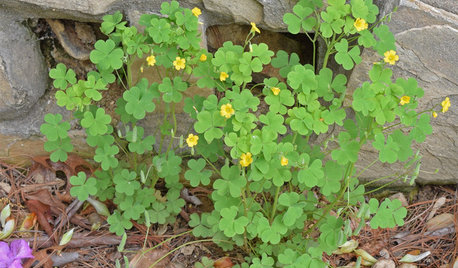
GARDENING GUIDESWhat Your Weeds May Be Trying to Tell You
An invasion of weeds can reveal something about your soil. Here’s what is going on and what to do about it
Full Story
HOUSEKEEPINGHow to Clean Marble Countertops and Tile
Acidic solutions can damage your marble surfaces. Here’s how to keep marble looking clean and amazing
Full Story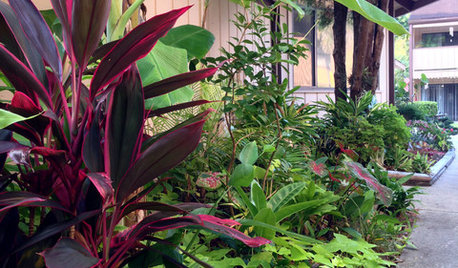
GARDENING GUIDESA Mom, a Garden and a Gift for the Neighbors
Gardening can be therapeutic in unexpected ways. See how one gardener found peace and purpose in a patch of Florida soil
Full Story
GARDENING GUIDESNew Ways to Think About All That Mulch in the Garden
Before you go making a mountain out of a mulch hill, learn the facts about what your plants and soil really want
Full Story
DINING ROOMSDeluxe Expandable Dining Tables Make Room for More
Whether your crowd has six or 16, these expandable tables fit the whole gang — and your style
Full Story
HOUZZ TOURSMy Houzz: An Aussie Home Mingles With Nature
This eco-friendly bushland retreat coexists beautifully with the surrounding environment, right down to its rammed-earth construction
Full Story
GARDENING GUIDESOh, Deer! 10 Native Flowers That Stand Up to the Herds
Keeping a garden amid hungry deer can be hard, but these plants should fare well
Full Story


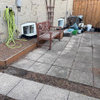
Richard Brennan